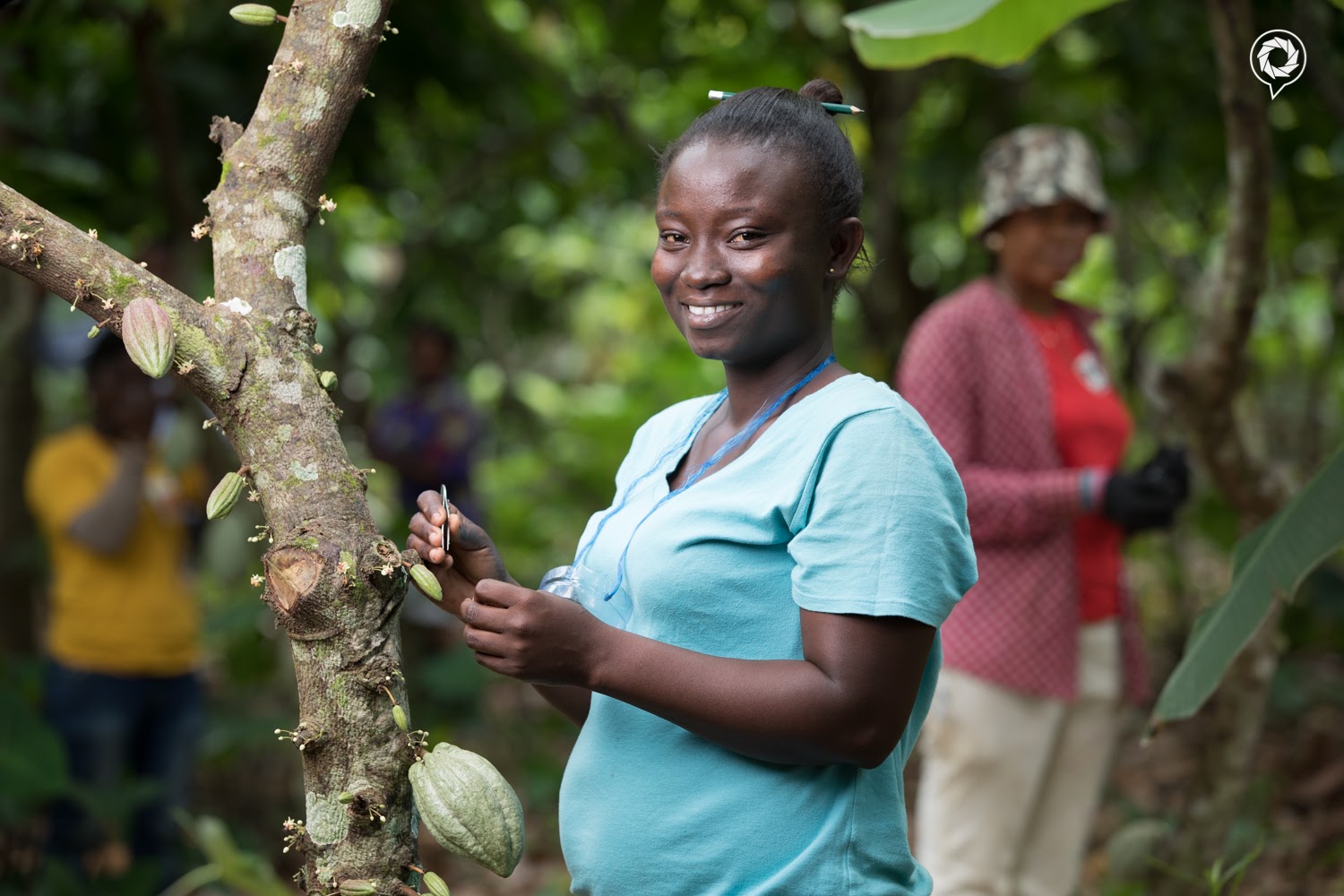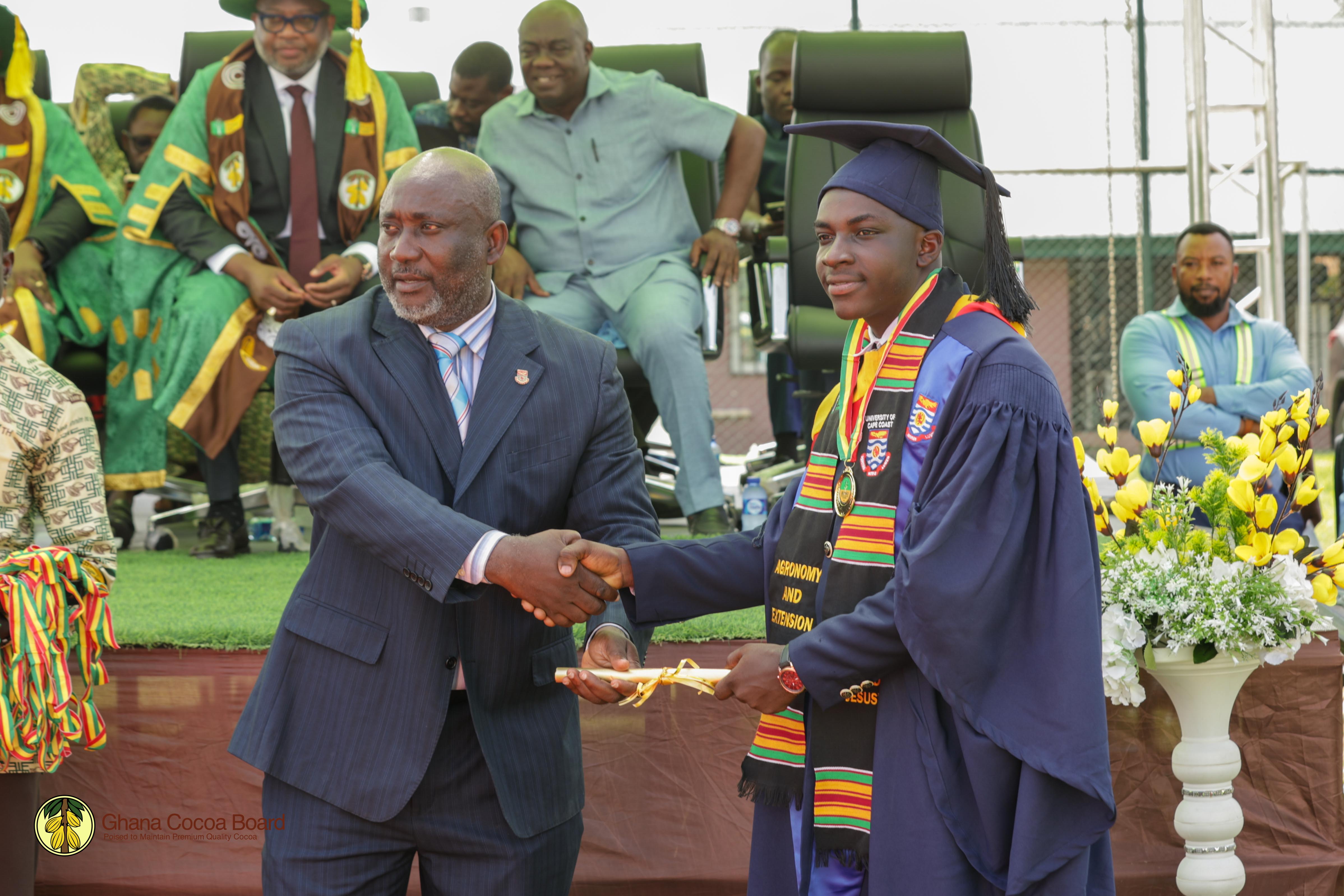INCREASING COCOA PRODUCTION IN GHANA - THE IMPORTANCE OF THE 4PS

Date: 12th January 2024
Cocoa, scientifically known as Theobroma cacao, is one of the important cash crops cultivated in Ghana. The crop has widely been described as the mainstay of Ghana's economy in view of its continuous contribution to strengthening Ghana's gross foreign exchange reserves. For instance, in 2021 alone, cocoa contributed about GHS3.1 billion ($533 Million) to the country's Gross Domestic Product (GDP), accounting for over 10% of the country’s GDP.
Even though the agricultural sector is the largest employer of Ghanaians, the cocoa subsector alone employs over one million farmers. In addition, Ghana's cocoa sector is touted for supporting the livelihoods of millions of people in the commerce, services and industrial sectors of the economy and thus, making the cocoa industry a pillar of Ghana’s economic development drive.
In the 2020/2021 crop year, Ghana recorded its highest ever cocoa production of 1,047, 000 metric tons. However, since attaining this feat, cocoa production has rather been sluggish, with the country struggling to achieve an average of 800,000 tons of cocoa production annually. This has led to simmering disquiet among cocoa farmers and also industry players, watchers, connoisseurs and policymakers.
Declining levels of cocoa bean stocks have been attributed to a myriad of factors which have gained notoriety in recent times. The unbridled and unmitigated age-old challenge of cocoa smuggling to neighbouring Cote d’Ivoire and Togo, mostly along the Eastern and Western corridors has significantly caused a drip in revenue from cocoa trade. The rampant threat of illegal small-scale mining (Galamsey) continues to hang around the neck of the country like an albatross, wreaking unimaginable havoc on Ghana's cocoa landscape. From Wassa Akropong in the Wassa Amenfi East District of the Western South Region to Akwatia in the Kwaebibirem District in the Eastern Region, the level of devastation of productive cocoa farms as a result of galamsey activities is a tearjerker and an apology to our conscience as Ghanaians.
What makes it even more heart-wrenching is the fact that there appears to be absolutely no hope in sight in addressing this canker as the nation appears virtually impotent and powerless in handling the menace. Consequently, hundreds of hectares of productive cocoa farms are razed down on a daily basis much to the chagrin of all, as law enforcement agencies look on unconcerned and in some cases complicity in our woes. Galamsey has consequently contributed largely to the unfortunate sharp decline in Ghana’s cocoa production as witnessed in recent times.
Another contributing factor is the twin challenge of the Cocoa Swollen Shoot and Virus Disease (CSSVD) and moribund cocoa farms. CSSVD affects about 17% of Ghana's total cocoa tree stock whilst 23% of the total tree stocks are overaged, moribund and unproductive and need massive rehabilitation. What this means is that, only 60% of the country's total cocoa tree stock is productive while 40% is technically redundant.
As a concrete step, COCOBOD in 2017 introduced the novel Productivity Enhancement Programmes (PEPs) in an effort to restore declining cocoa yields and in effect, ensure sustainable cocoa production. At the core of the PEPs module are the 4Ps of cocoa production which are Pruning, Pollination, Poultry Manure, and Protection. COCOBOD is poised to normalize the annual production of one million metric tons of cocoa from its 60% productive stock.
It is in light of this vision that COCOBOD, through Community Extension Agents (CEAs), has introduced the 4Ps in its extension activities to aid farmers realize the full benefits of the PEPs. Today, COCOBOD has successfully mainstreamed these 4Ps as components of the Good Agronomic Practices (GAPs) for adoption by cocoa farmers and the expectation is that with the support of thousands of cocoa farmer cooperatives across the country, high adoption rate would be achieved in this agenda.
So, what really are the 4Ps of cocoa production and how do they support the PEPs to improve yields?
PRUNING
Pruning is the systematic removal of the unwanted growth or parts of the cocoa plant. It is a good agronomic practice that is not only needed to optimize or shore up cocoa production but also to facilitate and ensure safer farm operations. Due to the strategic importance of pruning to cocoa farming, it has been described as the magic wand and master key to ignite higher yields in cocoa production.
In 2018, COCOBOD for the first time recruited some energetic youth as casual labourers across the seven cocoa-growing regions and 70 districts to undertake what is now the Mass Cocoa Pruning. COCOBOD, through its CEAs, at the beginning of every year encourages cocoa farmers and cocoa farmer cooperatives to ensure that all productive cocoa farms are pruned between the months of January and April. This exercise is being augmented by some 100,000 dual-purposed motorized pruners and slashers which were distributed to farmer cooperatives a few years ago to support, demystify and reduce the drudgery associated with the traditional means of pruning and weeding. These machines were also ostensibly introduced to discourage the use of weedicides in cocoa farms and in the process ensure biodiversity protection and conservation. Every year, COCOBOD provides fuel and engine oil to the cooperatives to support the operation of the motorized pruners and slashers.
Today, mass cocoa pruning is headlined by cocoa farmers and cocoa farmer cooperatives themselves as they have come to realize the significant difference pruning makes in their productive cocoa farms. Pruning basically involves the removal of unwanted growths like basal chupons, lateral, interlocking, drooping, diseased and dead branches. During pruning, epiphytes like mistletoes which feed off cocoa trees are totally removed. This automatically ensures the reduction of insect pest populations on the farm by not less than 50% while keeping the farm aerated with sufficient sunlight penetration to secure proper and healthy growth of trees.
After the mass cocoa pruning exercise, farmers are given flower inducers and liquid fertilizers to apply on their cocoa farms. These flower inducers and liquid fertilizers trigger the formation and retention of flowers. Guess what!, the magic of pruning is not only scientific but also biblical. In John 15:2, the holy book says, "He cuts off every branch in me that bears no fruit, while every branch that does bear fruit, he prunes so that it will be even more fruitful". Mass Pruning prepares the farm for Pollination.
POLLINATION
Pollination is the transfer of pollen grains from the anther of a flower to the stigma of another flower. This leads to fertilization and thereby fruit formation (In this case cherelles which grow into pods). It is common knowledge that the natural agents of pollination are insects (mainly midges in cocoa) air, etc. Unfortunately, natural pollination does not produce the needed pod load per tree which can lead to increased cocoa production.
It is against this backdrop that COCOBOD in 2017, introduced what is known as Artificial Hand Pollination, where forceps were used by farmers to artificially transfer pollen grains from the anther of flowers from one tree to the stigma of flowers of another tree.
Here again some youth were recruited and trained to artificially pollinate flowers on cocoa trees in all productive cocoa farms across the country. Today, due to the increased production levels and the huge financial benefits associated with artificial hand pollination, the exercise is now owned by cocoa farmers and cocoa farmer cooperatives themselves. Cocoa farmers now carry out artificial hand pollination themselves by employing COCOBOD-trained pollinators who pollinate their cocoa farms for them at a fee. Every year COCOBOD supports cooperatives with thousands of forceps to facilitate artificial hand pollination. After pollination there is the need to fertilize the soil to give the pollinated trees adequate nutrients to support the high pod load on the trees, hence the application of Poultry Manure.
POULTRY MANURE
Cocoa farmers in Ghana have become so accustomed to the use of inorganic fertilizers to fix low soil nutrients. This situation has hampered the campaign for the adoption of organic means of addressing soil nutrients deficiency. The over-reliance on the application of inorganic fertilizer on cocoa farms has invariably created the problem of salty and acidic soils. To this end, when inorganic fertilizers are applied, they are only available in the soil but not available to root hairs for fertilizer uptake.
These cocoa soils end up being deficient not only in vital nutrients over years through mineral mining (through harvesting of cocoa pods) but also get degraded. Poultry manure, being organic, comes in handy to aid the regeneration of degraded soils. Poultry manure is soil-friendly and can easily be utilized by the cocoa plant for increased production. This, coupled with its low cost as compared to inorganic fertilizers as well as its ready availability on the local market, makes it the best alternative to cocoa farmers.
COCOBOD therefore recommends that after pruning and artificial hand pollination, the next most important thing that cocoa farmers ought to do is to apply poultry manure to their cocoa to restore lost nutrients and increase crop nutrition to boost cocoa production in the country.
PROTECTION
From the foregoing analysis, it is obvious that the diligent application of the first 3Ps in mainstream cocoa farming guarantees increased yields. When pod load increases, it is important to give ‘Protection’ to the pods against pests and diseases like insects and fungus. Capsid, stink/shield bug infestations and black pod disease can whittle down the gains made by about 25%. COCOBOD has therefore expanded the scope and strategically modified the operational modalities of the Cocoa Mass Spraying exercise by making large volumes of insecticides and fungicides available on time at various gang areas for crop protection. It is envisaged that the adoption and implementation of the 4Ps of cocoa production in Ghana would invariably lead to increased production and support the achievement and sustenance of one million metric tons of cocoa and beyond.
Yes, we can do it! It is possible!
Article by Felix Kwame Quainoo,
Deputy Regional Manager for COCOBOD,
Western South Region, Dunkwa-on-Offin.
0244998919 / 0207744933
[email protected]
Other News / Articles you might be interested in.

COSSA - HEAD OFFICE ELECTS NEW EXECUTIVES
The COCOBOD Senior Staff Association - Head Office (COSSA - Head Office) has ...
Read More
BUNSO COCOA COLLEGE HOLDS 3RD GRADUATION CEREMONY
By Geoffery Opoku-DarkoThe Bunso Cocoa College (BCC), a division of the Ghana Cocoa ...
Read More
2025 COCOA AND COFFEE AWARD WINNERS; COCOSHE EXECUTIVES PAY COURTESY CALL ON COCOBOD CHIEF EXECUTIVE
The 2025 National Best Cocoa and Coffee award winners together with the Ghana Cocoa ...
Read More